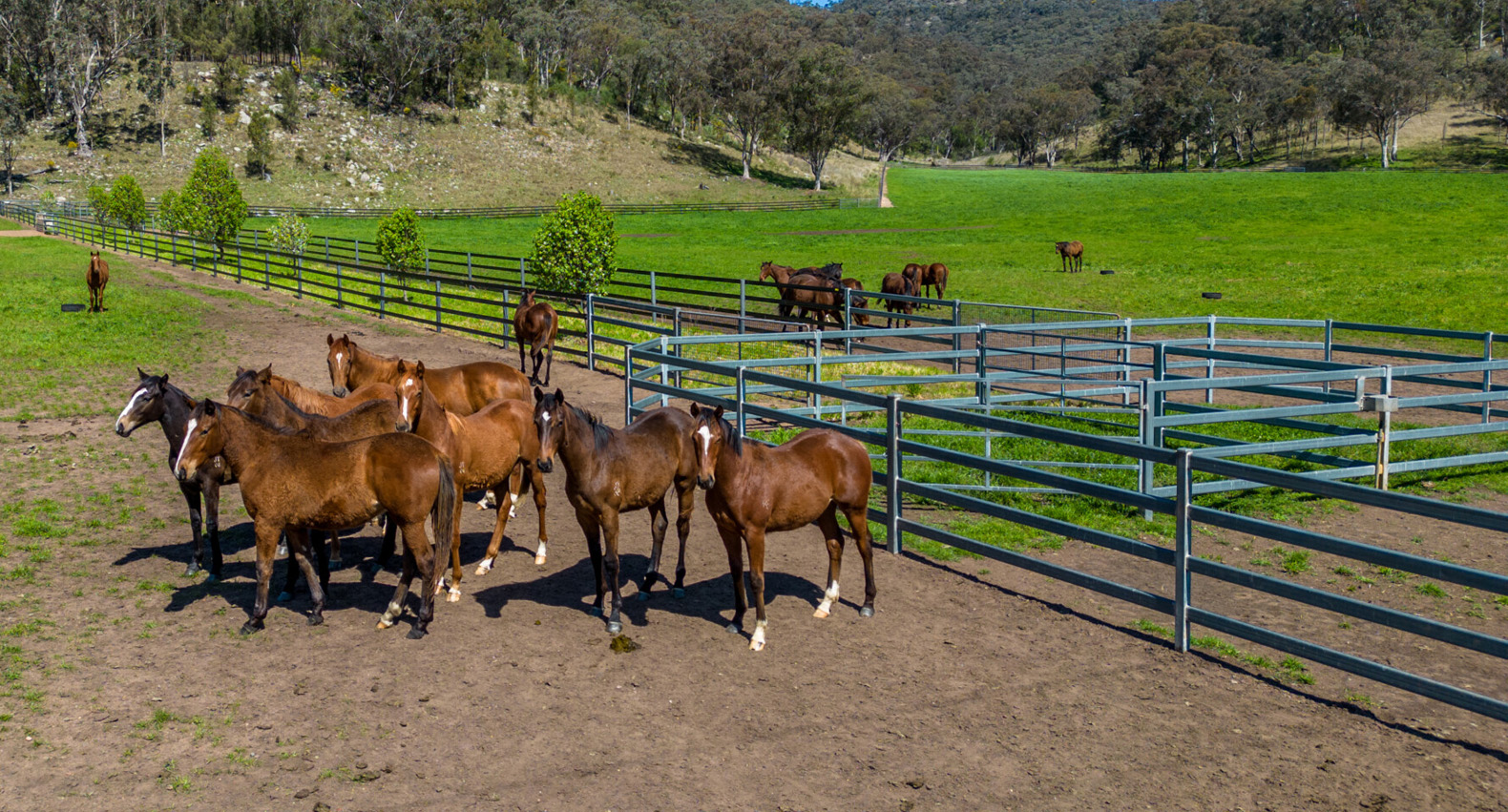Managing a thoroughbred stud farm requires robust infrastructure, and using holding pens are a critical component in managing a large amount of horses. These pens facilitate the efficient handling and management of horses, ensuring safety and ease during various routine activities.
Understanding Holding Pens
Holding pens usually positioned centrally to large spelling paddocks allows horses to be moved safely and easily into smaller more manageable areas for a short time.
The size of these pens can vary significantly based on the requirements of the stud. Larger studs typically require bigger pens due to the higher number of horses they manage. It is crucial that these pens are built with robust materials, with steel fencing being highly recommended for its strength and durability. This ensures the safety of the horses and prevents injuries.
Unlike other types of fencing, electrics are not suitable for holding pens. The smaller area and the necessity for handlers to access the pens in emergencies make electric fencing impractical and potentially hazardous.

Key Uses of Holding Pens
Holding pens serve multiple purposes on a thoroughbred stud farm:
- Separation for Management: They allow for the segregation of horses for various durations, which is essential for performing routine check-ups, handling foals and weanlings, or managing broodmares.
- Teasing Mares: Holding pens can be used for paddock teasing, allowing stallions to interact with multiple mares within their paddock, thus simplifying the process without moving mares to the stable.
- Veterinary and Farrier Work: Horses can be easily moved into holding pens for veterinary or farrier services, ensuring these activities are conducted efficiently.

Benefits of Using Holding Pens
The primary benefits of holding pens include:
- Efficient Horse Management: They make the management of large numbers of horses easier by allowing for the segregation and handling of smaller groups.
- Safety and Security: Properly constructed pens enhance the safety of horses and handlers.
- Labour Efficiency: They reduce labour costs by minimising the need to move horses long distances for routine care and handling.
- Flexibility: Holding pens provide the flexibility to move horses to different areas such as stables, paddocks, or foaling yards with ease.

Considerations for Constructing Holding Pens
When planning and constructing holding pens, several factors should be considered:
- Size and Number of Pens: The size of the main holding pen and the number of smaller yards should be proportional to the number of horses and the size of the paddocks. Common sizes for main holding pens range from 10x10m, 9m x 12m to 20x20m for larger pens, with smaller yards off or within the main pen around 6x6m for individual handling.
- Accessibility: Ensure easy access for machinery and emergency situations. Gates should be wide enough (at least 3m, ideally 4.2m for larger equipment) and positioned to allow straight-line access.
- Water and Power Supply: If horses will be in the pens for extended periods or if veterinary work is anticipated, access to water and power should be well considered.

Fencing Solutions for Holding Pens
Steel is the preferred material for holding pens, renowned for its exceptional strength and longevity. It provides superior manageability, easy access, and increased safety. The durability of steel ensures that handlers can quickly and safely climb through or over the fence, particularly in emergencies. Additionally, incorporating EzyEnds can enhance the efficiency of installation and reduce overall project costs.
Duncan Equine is experienced in developing and planning fencing solutions that incorporate holding pens. For expert advice and high-quality fencing options, contact us for an obligation-free property plan.









